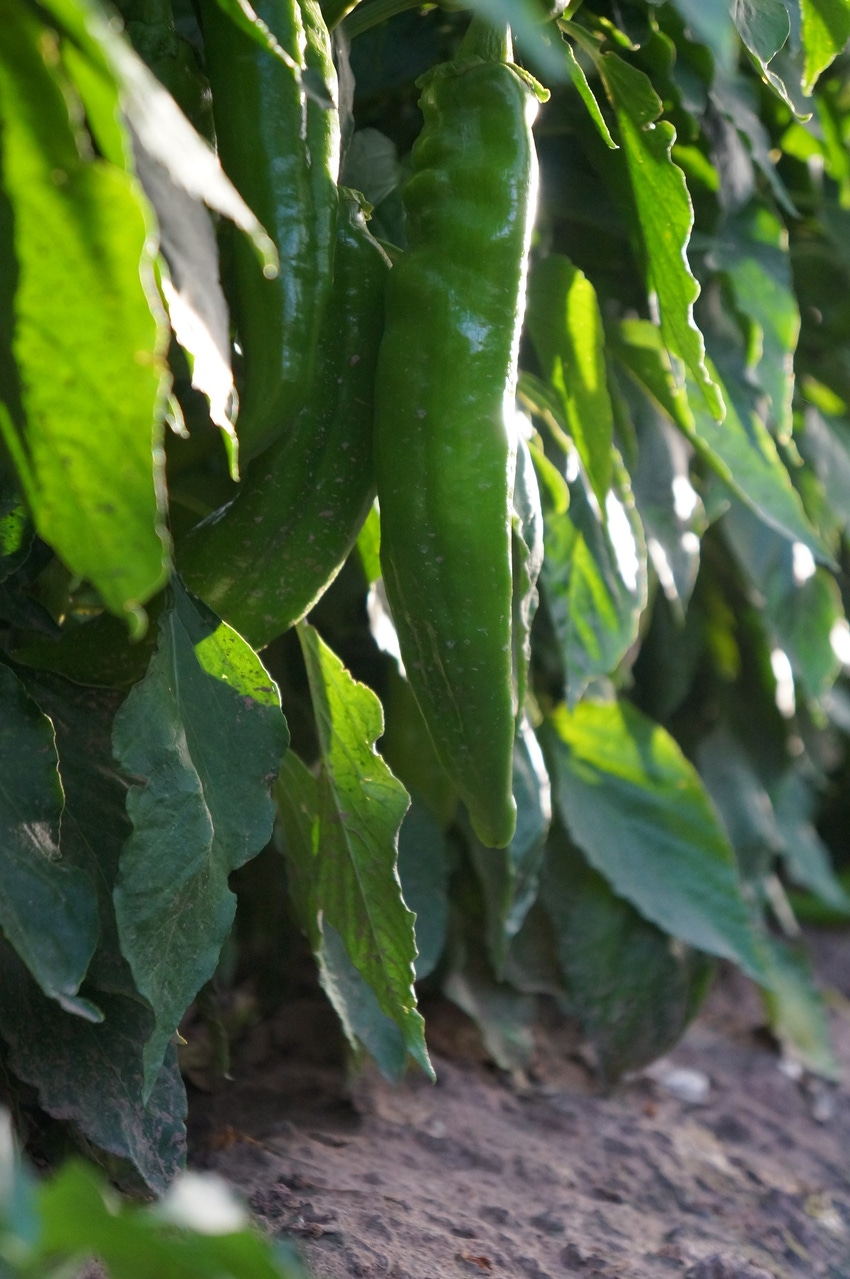
In spite of a decent harvest so far this year for New Mexico green chile farmers, concerns over a lack of farm labor, a shortage of once-abundant irrigation water and growing global chile market competition concern many in the indsutry.
But news of headway for new domestic green chile competition from the Pueblo, Colorado, area may rally growers. New Mexico Chile Association officials and Hatch Valley producers say they are prepared to challenge Colorado officials who claim their green chile is bigger, hotter and better for consumers.
Colorado state agriculture officials say Pueblo chiles are nothing new. While they have remained in the shadow of the venerable Hatch chile for years, they argue the 'High Country' variety of Pueblo chiles offer advantages over the more popular New Mexico variety. They say they are beginning to get a foothold in the commercial marketplace.
For the latest on southwest agriculture, please check out Southwest Farm Press Daily and receive the latest news right to your inbox.
News that Whole Foods Markets in Colorado, Kansas, Utah and Idaho have not only entered into contract to carry the not-so-well-known Pueblo chile in their stores but also have partnered with Pueblo growers to promote their chiles is disconcerting to New Mexico growers who believe their product is king among chile varieties.
To make matters worse, regional produce coordinator for Whole Foods Market, Steve Lunzer, announced last month that the store is dropping the Hatch brand and is putting 125,000 pounds of Pueblo chile on its produce shelves, effective immediately.
Location advantage
"Our stores in Utah and Idaho are a bit closer to Pueblo than New Mexico," said Lunzer, explaining that Pueblo chiles require shorter transport distances.
He also emphasized the store’s intent to help Pueblo chile farmers garner more attention for their product, which Colorado growers claim is a thicker, meatier chile than Hatch varieties and better suited for roasting.
While New Mexico chile officials refute that claim, they admit the new competition adds concern for the well being of a New Mexico tradition already fraught with multiple challenges. They argue it is not just the climate that makes their chile unique, but the soil, and more importantly the long developed family method of farming, what some simply call the 'TLC' result of traditional chile farming.
Shane Milberger, a long time chile grower in Pueblo, doesn't deny that New Mexico chiles are a successful and well received product. But he argues his farm-raised chiles represent some of the same basic advantages. For one, his 30 years of growing chiles in Pueblo also represents a traditional family practice and says he is thankful Pueblo chiles are finally going to get the recognition they deserve.
With a newly formed association of Pueblo area chile farmers, renewed support from Pueblo County economic development officials, and recognition by distributors like Whole Food Markets, he is encouraged that he can pass that family tradition down to his son who is already impassioned by the family business.
Chris Markuson, director of economic development for Pueblo County, is also encouraged by Whole Foods Market's interest in Pueblo chiles. He says he is confident the deal will provide a $1.1 million impact for the area and says that is expected to grow by nearly 10 percent every year.
Pueblo farmers say in addition to a meatier chile, their chiles also offer consumers a product that ranges from medium heat to a much hotter chile than their Hatch counterparts.
New varieties
Michael Bartolo, manager of Colorado State University's Arkansas Valley Research Center, says the development of his latest varieties of Pueblo chiles originated from Mirasol chile pepper stock, a heritage variety farmed by Pueblo chile farmers, including his uncle, in the 1900s. He said that variety probably has its roots in Mexico.
Using seeds his father passed down to his research lab, the new Mosco variety was born, The work is far from finished. His department continues to work on developing newer varieties that will grow better and provide more advantages in taste and shelf life.
As far as the introduction of Pueblo chiles into the domestic marketplace is concerned, New Mexico chile growers say while they are challenged by all new chile products both domestic and foreign, they will rely on the "preferred taste" Hatch chile varieties offer and point to the generations of chile farmers in New Mexico, with the help of New Mexico State Extension researchers, who have helped develop "the best tasting chile in the world," a sentiment shared by consumers not only in New Mexico but also by chile lovers across the nation and in international markets.
If nothing else, they say, the new challenge will encourage Hatch growers to rally around their prized chile and work that much harder to make consumers aware of what they call the superior taste of one of the world's most famous chile varieties.
About the Author(s)
You May Also Like




